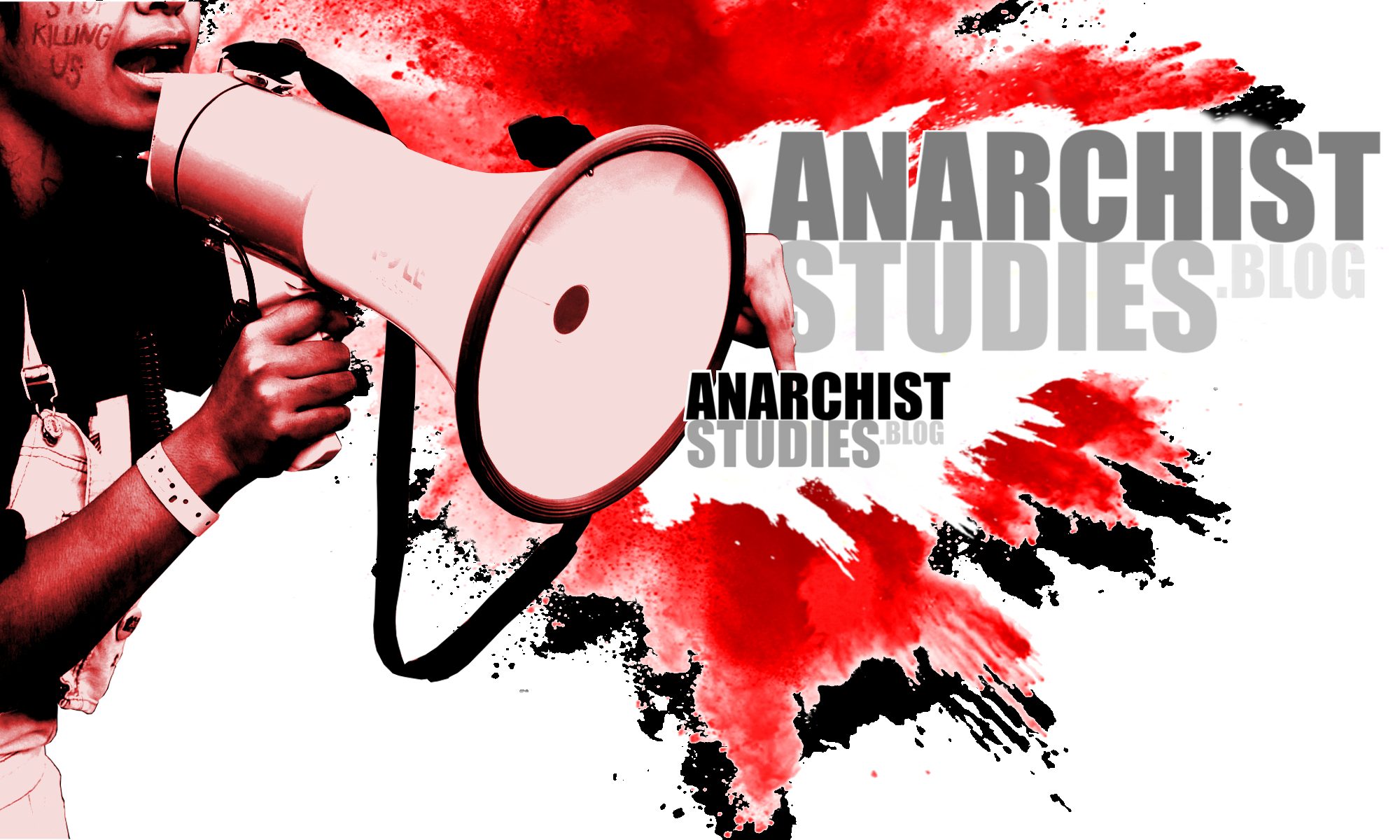Katya Lachowicz in interview with Jim Donaghey
29th June 2020

[A Dutch translation of this article is available at GlobalInfo.nl]
In the Covid-19 crisis the combination of serial incompetence, public services scythed by forty years of neo-liberalism, and a callous disregard for the lives of ordinary people came together with murderous results under Boris Johnson and the Tory party. The death of almost 65,000 people so far in the UK as a consequence of Covid-19 is the strongest possible indictment of the Tory government’s botched response, but the failure to provide Personal Protective Equipment (PPE) to health workers illustrates some of the character of their callous incompetence. The scandal highlighted several key issues: the UK’s unpreparedness for pandemic crises; the lack of industrial production of key resources in the UK; the sclerotic inefficiencies of centralised procurement and distribution in NHS Trusts augmented by the profiteering of outsourced private agencies; the disgracefully low pay of health care workers, their precarious working conditions, and the exploitation of migrant workers and BAME people.
But, as has been highlighted on this blog and elsewhere [for example – here, here and here] the coronavirus crisis has also generated inspiring responses by grassroots mutual aid initiatives, and the production of scrubs and gowns for health workers has been a particularly successful example of that. The Scrub Hub initiative started in Hackney Wick, London, in mid-March, and rapidly blossomed into 127 Scrub Hub groups across England, Scotland and Wales, each operating independently under the umbrella of the ‘Scrub Hub’ network.
Jim Donaghey met (virtually) with Katya Lachowicz, one of the core members of a Scrub Hub in East London which was established at the end of March. The group in Newham are on their way to producing a total of 900 scrubs ordered by 160 health workers for themselves and their colleagues. The group hit a peak of around 200 volunteers, but as people return to work that number is dwindling, though the demand for scrubs persists.

Jim: So, first of all – what’s it like to be involved in the production of scrubs?
Katya: Well … I think it’s been a rather tedious process that has had highs and lows and various challenges. Interesting, all the same. I think my personal engagement with it was perhaps a little different to others, and really that was because I saw it as an opportunity for political action. Perhaps I could be a little bit more positive [laughs] – it’s been great seeing the whole process come together and especially to see people working together who perhaps wouldn’t in other circumstances.
J: Was this kind of work something you were doing beforehand?
K: In terms of sewing? No. I actually haven’t sewn any scrubs, as there are people who are far more skilled than I am. However I did make a few plastic gowns.
J: So, you are involved with the organisational side of the scrub production?
K: Yes. To give you an idea of the scrub production process as a whole, it starts with purchasing material and the drafting of patterns, the cutting of pieces, overlocking the edges of those pieces to prevent fraying, and sewing them together to form a top and bottom. To make a scrub it depends on your skill level and time of course – so some can make one in a day, others ten.
And there are many other factors that come into this process, such as how to source material, press and social media, outreach to health workers and volunteers, structuring safe and sane working conditions, developing data systems for collecting orders, tracking the progress and stock levels, distributing materials. The work took up every day for the first month at least. Many of us, particularly in the organisational core, were answering messages from 7:30 in the morning to midnight every day.
J: That’s a heavy workload! How did the scrub work fit in around your life?
K: With difficulty – I’m a freelancer so I have a flexibility that some do not have. But we all worked around it pretty well.
J: And how did you get involved with it in the first place?
K: I really have to explain the birth of scrubs movement for it to make sense. It’s probably important to note that there were (at least) two separate movements. For the Love of Scrubs (FTLOS) was set up at the same time as Scrub Hub. FTLOS was the creation of a nurse who didn’t have scrubs in her workplace, so she started sewing them at home, then started sewing for her colleagues, and as it became clearer that the problem was larger than in her ward, she started a Facebook group. Scrub Hub responded to the same lack of scrubs but through a mutual aid group in Hackney Wick, London. These two groups differed tremendously in terms of how they worked structurally.
At the end of March I came across FTLOS and I was concerned about whether this unpaid production was affecting workers around the country who might have been demanding better conditions in their workplaces etc. I had written to FTLOS about this but received no response. This was troubling, so I started to research. I found the NHS suppliers, called them up and had a chat. They told me that if I wanted to order a scrub there was a six week waiting list. Some of these suppliers were old garment factories who had since shifted away from UK-based production, and turned to distribution, ordering stock from China, India and Pakistan. There was no apparent scrub production in the UK.
I came across Piarvé Wetshi who wanted to start a Scrub Hub in East London and asked her whether she had considered creating a workers’ cooperative. And so we started from there – the Scrub Hub network was quite explicit about not making scrubs for NHS Trusts. We liked this idea and went forward with setting up grassroots production which would take orders directly from health workers and deliver it to their homes. In contrast, FTLOS was involved in making scrubs for the NHS Trusts.
J: And, forgive my ignorance, but, are scrubs usually destroyed after being used?
K: No, so scrubs are the pyjama-like clothing that health workers wear and change in order to prevent cross contamination. They are then washed industrially at 90° or at home at 60°, depending on the workplace. In some cases scrubs are provided by the hospitals and in other cases the health workers have to buy their own. In the case of Covid wards, scrubs would have to be changed around ten times a day.
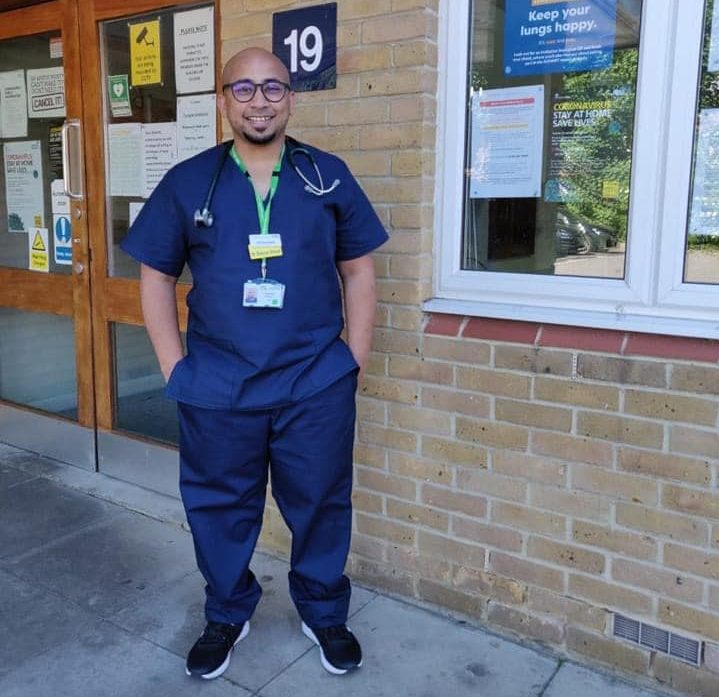
J: Ah, OK, so the frequent need to change is where the demand for more scrubs is coming from.
K: Yes, and there is also the issue that some uniforms are too thick to wear under PPE. And even when scrubs became available on the market, the price had risen meaning a lot of health workers could not afford them.
J: Oh wow, so there was price gouging going on?
K: Of course, and later with material as well – this is why a lot of makers ended up not using blue polycotton as the prices were extortionate.
Scrubs were being redirected from de-prioritised wards to Covid wards. This meant that many health workers ended up having to bring in their home clothes to wear and didn’t have the ability to change scrubs between patients. A&E and maternity were some of the deprioritised wards. We heard of really horrific stories.
J: What is the government’s role in all this?
K: There was a report back in 2016 [Exercise Cygnus] that suggested to the government that in the event of a pandemic it would not be prepared. So the government was well aware of the risks and, in spite of the shortages, PPE pandemic stockpiles in the UK were in fact still being sold to other countries at the end of April, a stockpile that had been outsourced to a private company called Movianto. And this outsourcing continued all the way through the pandemic where PPE management was handed over to companies such as Movianto.
J: I wonder – are they being deliberately shit? I mean, to what extent has the Tory government’s social Darwinist ‘herd immunity’ mindset been a factor in the incompetence over basic PPE provision? I don’t mean to suggest some kind of eugenicist conspiracy at work, but ‘herd immunity’ has clearly been the guiding principle of the government response. Or is this purely an outworking of the de-funded NHS and neo-liberalism in general?
K: The Tory government has a track record of hatred towards the working class – their response level has primarily mirrored the interests of their voters and how the virus has impacted them. Whether there was an outright eugenicist ‘plan’ or not is perhaps still speculative. But it does say a lot about the crisis of neo-liberalism as a whole – the capitalist system has always favoured death over life.
The dynamic we entered as scrub makers was a political one and a key factor in the management of the pandemic was a cost-benefit calculation. Since 2012 the NHS has been increasingly privatised – the consideration made here was whether it was ‘profitable’ to save lives. People with learning disabilities, for example, who found themselves on ventilators had ‘do not resuscitate’ put on their medical files. Eugenics in this sense is inherent to neo-liberal economics.
But the problem is also one of production – since Thatcher, UK production is in a really bad state. The remaining manufacturers here were called upon (albeit late) to adapt their lines to the production of scrubs and PPE. However, the delay was significant. Manufacturers were waiting up to two months for a response and many local manufacturers were rejected in favour of larger corporations. And then, in the case of PPE, many larger manufacturers who did manage to finally receive contracts from the government for production were faced with a lot of red tape in the form of regulations and certifications, which were later imposed upon voluntary networks as well.
J: OK, let’s return to that issue of the government ‘officialisation’ of scrub production in a moment. I’d like to know a bit more about the organisation of these initiatives. You mentioned that Scrub Hub and FTLOS are quite different. Is Scrub Hub run as a workers’ co-op?
K: Scrub Hub East London had such aspirations but we couldn’t actually get in touch with NHS procurement to arrange a contract. In one hospital, the procurement department said they were fine for PPE even though the workers couldn’t even find masks to wear. We tried to contact Barts Health HQ who wouldn’t pick up the phone or answer e-mails. So we found ourselves in a dilemma where we actually couldn’t enter waged labour and were forced to do it unpaid.
In terms of organisation, unfortunately what was happening with FTLOS was that a list of regions was created and people on the Facebook page appointed themselves as ‘regional coordinators’ in spite of the fact that Scrub Hub had several groups around the country already. This led to some tensions regarding the imposition of leadership by individuals with contacts in procurement and the normalisation of taking bulk orders from NHS Trusts in top-down models without seeking remuneration for the people offering their time and skill.
J: OK, so this is an issue of organisational hierarchy? And some kind of claim to monopoly over this scrub production by FTLOS?
K: There was definitely a monopolistic claim to scrub production by FTLOS, who then accumulated significant funds for buying fabric, which was not shared out to groups not belonging to FTLOS. Some volunteers within our collective had also worked for FTLOS and described it as a very alienated process because they did not have the same contact with other makers and with the health workers as in the structures we created.
J: So is Scrub Hub able to avoid such hierarchies? And to what extent was that a conscious choice?
K: It was a very conscious idea. This was one of my concerns in observing FTLOS at the start of its creation. You could see the trajectory it was going to take.
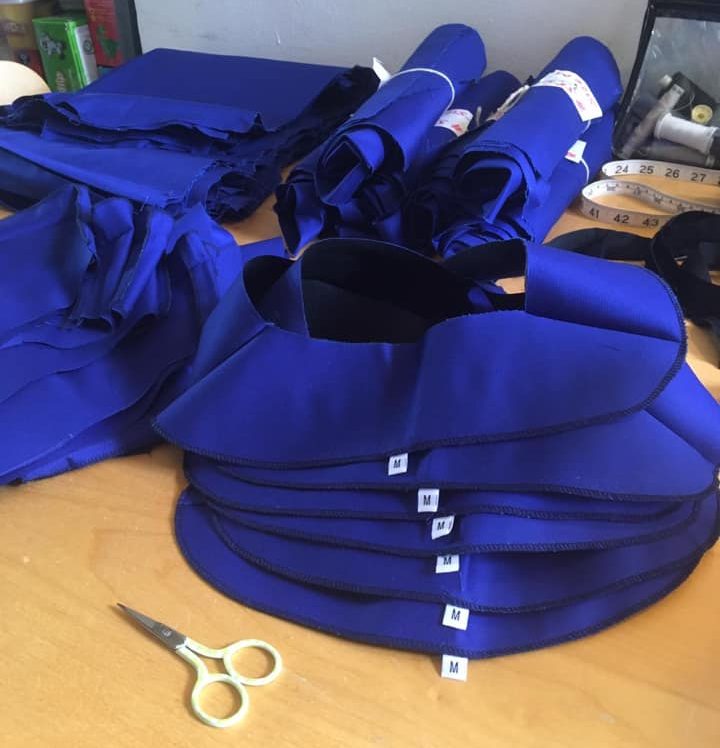
Scrub Hub East London first had a general Whatsapp group, and in order to start production as quickly as possible we needed to make up a team of skilled sewers (you need a sewing machine and an overlocker), so another separate group was created. This obviously can lead to an unfavourable dynamic, so we divided the initial group into smaller neighbourhood groups containing people with a variety of skills and kept the main Whatsapp as a general meeting point and a place to share knowledge and patterns, celebrate the scrubs we made, and post photos of the health workers receiving them. There were also separate groups for bag, mask and gown making.
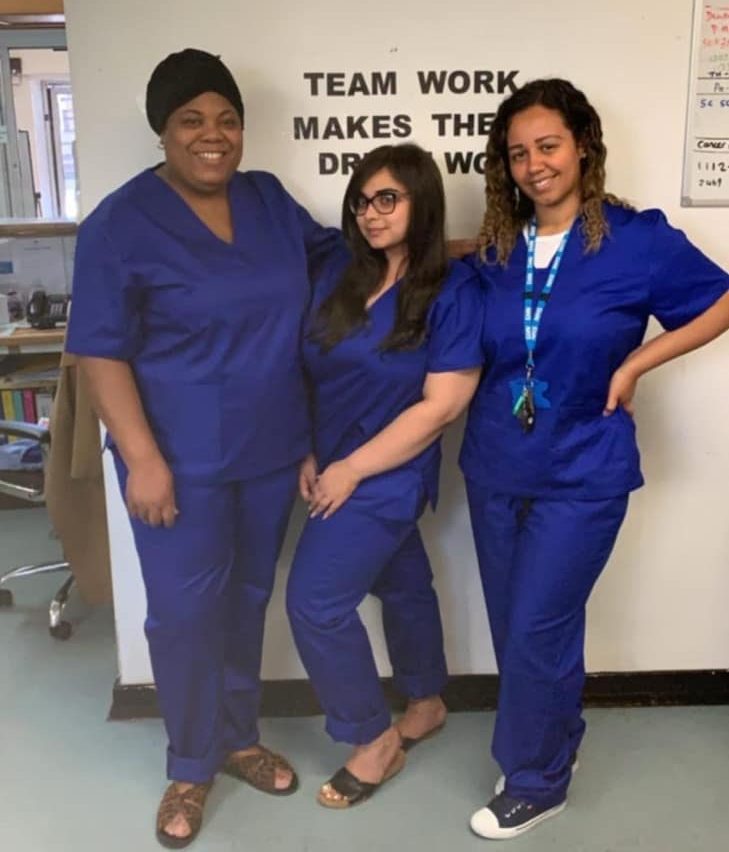
J: And what about delivery of scrubs, is that also local to the producing groups? Or is distribution more widespread?
K: Everything is local. But it is worth noting that the organisation of other hubs differs from ours – in order to create horizontal structures, you have to make some very conscious decisions. We are fighting against a certain neo-liberal culture of the organisation of work which deliberately alienates workers from mutuality, which places emphasis on hierarchy, ‘expertise’ etc. And even within the development of our own hub we had these difficulties to contend with, especially in regards to the ownership of work.
J: Yeh, you mentioned in a previous conversation that a lot of the volunteers in the collective were professional seamstresses or tailors. Is it unusual for those workers to operate collectively? Or did the ‘cottage industry’ aspect work to your advantage somehow?
K: Interesting question. So, I think for many people this was the first time they had really come into contact with collective work, and you could really see the beauty of people managing their own time, sharing tips on how to navigate difficult sewing bits and so on. The smaller neighbourhood groups were designed in such a way that they have a whole range of abilities in them that could come to each others’ aid. But yes the seamstresses/tailors would under normal circumstances work on their own.
Regarding ‘cottage industry’, I really don’t like this term and it was adopted by the movement and press quite a bit. I feel that its use was detrimental to developing credible forms of autonomous production. Scrub makers across the country were depicted as housewives with nothing better to do, and it played into the ‘war effort’ rhetoric. Of course the reasons for people’s participation vary and a lot of people have expressed that it has helped deal with the psychological impact of the crisis. But this is because we ourselves have constructed conditions of dignity, human interaction and care in purposeful practices of work.
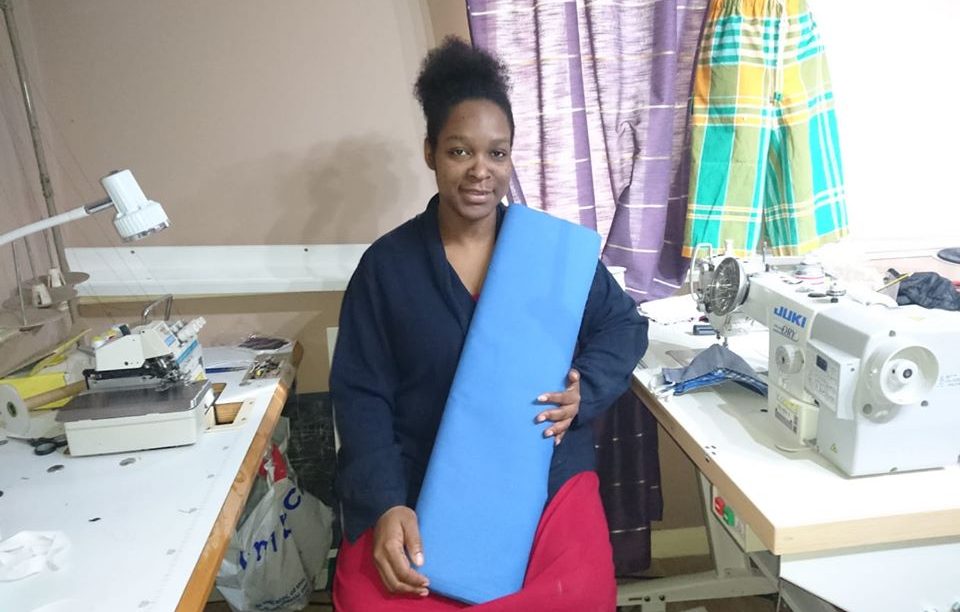
J: I suppose I was thinking in a more positive sense of the ‘petit bourgeois’ characterisation of traditional ‘cottage industries’, operating with a certain degree of autonomy with their associations, guilds and trades and so on. But yes, I can see how the ‘housewife’ thing feeds in there.
K: The term ‘cottage industry’ was not used in that way by people in the movement, but perhaps what we did create was an opportunity to form something akin to the community clubs that those historical guilds established.
J: Yeh, I guess most people aren’t thinking about ‘cottage industries’ in that way … in fact I note that in the mainstream media, the only paper using the term was The Times – yuck! But it’s interesting that some of the same progressive aspects are re-emerging in your context.
Speaking of guilds and trades and so on, where were the unions in all this? Did the likes of the Royal College of Nursing (RCN), Unison or Unite get involved?
K: No. Not to my knowledge. There were however calls for national production.
J: So, the big unions were just active at the level of protest or general campaigning?
K: As always. I did see the United Voices of the World Union (UVW) get hold of 2000 medical masks but they were primarily distributed to their members, and that was pretty late. They didn’t set out to create links between makers and key workers. And there was just a whole conversation on unpaid labour that went amiss in the incessant frolicking of the media, with all their ‘heroes’.
J: Yeh, the unpaid labour issue is huge. Were many of the collective volunteers on furlough schemes or anything like that? I can sort of see the trade-off in working unpaid if you have an income.
K: Yes and among those who were still working, one person told me that her boss allowed her to use her work time to make scrubs. Really it’s a question of value and, in particular, devalorisation. It was really sad to see how many people were not questioning why scrub production had to be unpaid.
Of course the government feared us and the size of the network. I think a great deal of media attention and later regulation was spent on making sure that we did not have the capacity to enter waged work on our terms. But on the other hand it was great to see people wanting to ‘do’ so much for a broader community. Just now we reached out to a sister hub in Somerset who gave us more than seventy spare scrubs they had made to help us out. They used volunteer motorcyclists to deliver them to us.
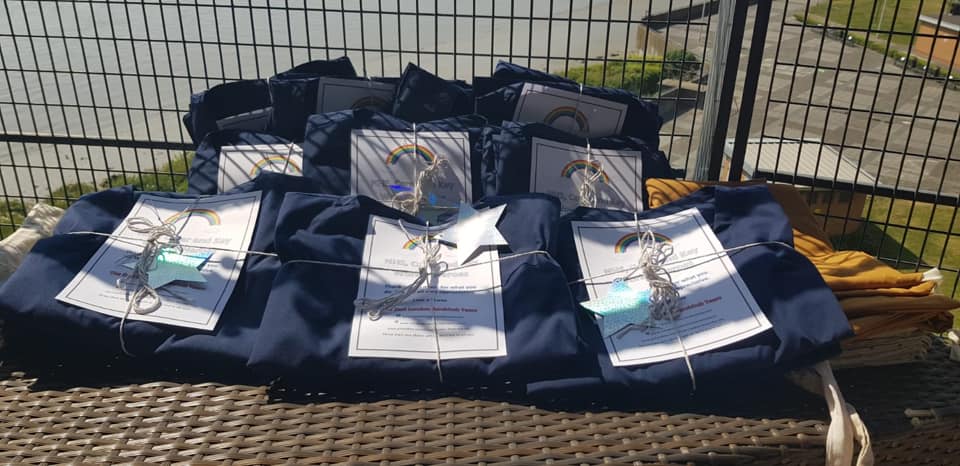
J: I wonder if the unpaid labour issue stems from, or feeds into, the charity mentality? Why is this initiative better described as mutual aid, and not just charity?
K: Oh don’t get me started! Charity is different from mutual aid because the latter is based on horizontal structures of solidarity and an emphasis on community building. But the concept of voluntary work is another challenge … to a certain extent we are being outsourced by the state. And you can clearly see that with the rise of ‘mutual aid’ apps created by private enterprises, which once again enter into this kind of input-output mentality of pairing volunteers with ‘the cause’.
At the beginning of our development we faced several occasions where we were going to be co-opted into charity structures.
J: These were existing charities that tried to absorb your initiative?
K: Yes and they were waving their cash and connections around when you needed it the most.
J: Were they really that blatant?
K: Isn’t everything blatant these days?
We had issues getting funds here because we’re in a predominately working class area and (thankfully, I suppose) a lot of the responses we had were ‘isn’t this the government’s responsibility?’ So people received our hub quite sceptically at the beginning and of course it wasn’t up to them to pay for it.
So we were fronting the cash ourselves to get production going and asking health workers for donations if they could afford it, and we got our first fabric roll from the richer Scrub Hubs in the North of London, who were very generous towards their poorer cousins – this was great to see – and we have seen it again with the solidarity response from the other hubs who have since stopped production and have helped us get more volunteers and so on. So, again, there was a benefit from organising ourselves as part of a larger network with a direct means of contacting each other.

J: That’s good to hear. How much of a factor was funding from the big charity organisations? And what about donations from the wider public?
K: We didn’t receive monetary funding from charities, bar one, and it was around £250 from a group of parents with children who have Special Educational Needs. We managed to get a lot of fabric donations from people. Funding came largely from the general public who were mobilised into giving via the media. We had interviews with the BBC, Channel 4 etc. Who of course spun their own stories, misquoting us at times to their advantage. It takes a lot of work to make sure that everything is framed correctly – and many volunteers were also quite averse to politicising the issue. And, again, I think part of this is the productivist understanding that politics should be left at the door when entering relations of work, and that the morale of the volunteers and those donating would be better off without it
J: ‘Official’ scrub manufacturing in the UK didn’t get underway for many weeks, but how did the eventual increase in ‘official’ production impact the autonomous initiatives?
K: UK scrub manufacturers took at least six weeks after the lockdown to receive contracts to then even start planning production. In our case, Newham hospital is part of Barts Health Trust which oversees five different hospitals. And as it is centralised, the individual hospitals don’t seem to have much autonomy with regard to their own procurement. So even after ‘official’ production has started, by the time the scrubs enter the system and filter down to all the various wards according to priority lists, it has taken a long time for us to see any changes in the volume of orders coming through to us.
The demand is still there. We have now had to stop taking orders as we are struggling to get through them all. But quite a few of them are ordering because our scrubs are much better than the NHS ones, in terms of size variety and quality. We’ve heard that on several occasions, and the same applied to the gowns we were making.
J: That’s interesting!
K: Until the government updated PPE regulations to include voluntary organisations.
J: Ah ha.
K: Then we had a bit of a crisis between ‘legitimacy’ and ‘legality’. And the smart asses did that exactly when it would hurt us the most – when people were returning to work. And many distanced themselves from the collective at that point.
J: So, the last three months have been pretty intense, to say the least. But it seems like things are shifting gear at the moment. What are the prospects for the network over the next three months?
K: Well our Whatsapp groups have really created something worth keeping and a lot of the participants are looking to create ‘legacy projects’, for example, some are sewing a huge quilt with fabric squares donated by volunteers wishing to participate. It’s different to what we would perhaps consider as a potential prospect within the framework of mutual aid, but it definitely has an affective value to the people participating in it and this is an important factor.
With regards to the Whatsapp groups, we saw people use them in a variety of ways, helping each other sew, fix machines, and people have even started bumping into each other in the streets – these are all very important aspects of community building, and we’re not entirely sure how to place ourselves in the future. For now, a few of us are willing to stay on and do this for as long as it’s needed. But I can imagine progressing into an expanded form of mutual aid out of the foundations of those guild-like bonds because it is our joint work that has allowed us to form the connections we now share.
In this respect, it’s really worth reflecting on the experience we’ve had, especially in regards to creating mutual aid groups with people who are not used to working collectively and would very surely steer away from anarchist politics.
J: Yeh, it’s a great lesson in the practical possibilities that are right in front of us!
K: Exactly, I think that in some cases there is a lack of desire among politically active people to be involved in these kinds of scenes. And it’s very important not to isolate ourselves. Especially here in the UK where in terms of organising we haven’t really gone very far.

